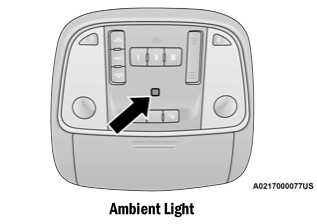Dodge Charger: DRIVING TIPS / Driving On Slippery Surfaces
Information in this section will aid in safe controlled launches in adverse conditions.
Acceleration
Rapid acceleration on snow covered, wet, or other slippery surfaces may cause the driving wheels to pull erratically to the right or left. This phenomenon occurs when there is a difference in the surface traction under the front (driving) wheels.
WARNING!
Rapid acceleration on slippery surfaces is dangerous. Unequal traction can cause sudden pulling of the front wheels. You could lose control of the vehicle and possibly have a collision. Accelerate slowly and carefully whenever there is likely to be poor traction (ice, snow, wet, mud, loose sand, etc.).
Traction
When driving on wet or slushy roads, it is possible for a wedge of water to build up between the tire and road surface. This is known as hydroplaning and may cause partial or complete loss of vehicle control and stopping ability. To reduce this possibility, the following precautions should be observed:
- Slow down during rainstorms or when the roads are slushy.
- Slow down if the road has standing water or puddles.
- Replace tires when tread wear indicators first become visible.
- Keep tires properly inflated.
- Maintain sufficient distance between your vehicle and the vehicle in front of you to avoid a collision in a sudden stop.
Your vehicle may be equipped with a Limited Slip Differential (LSD) that reduces, but does not eliminate, the amount of wheel slip across a given axle for improved handling.
 DRIVING TIPS
DRIVING TIPS
..
 Driving Through Water
Driving Through Water
Driving through water more than a few inches/ centimeters deep will require extra
caution to ensure safety and prevent damage to your vehicle.
Flowing/Rising Water
WARNING!
Do not drive on or across a road or path where water is flowing and/or
rising (as in storm run-off)...
Other information:
Dodge Charger 2011-2025 Owner's Manual: Home
When Home is selected, a series of widgets (gauges) can be customized by the user. Follow these steps to change a widget. Either press directly on the widget you want to change, or: Press the Settings button (gear icon) on the touchscreen to access the main menu for the widgets...
Dodge Charger 2011-2025 Owner's Manual: Tire Pressure
Proper tire inflation pressure is essential to the safe and satisfactory operation of your vehicle. Four primary areas are affected by improper tire pressure: Safety Fuel Economy Tread Wear Ride Comfort and Vehicle Stability Safety WARNING! Improperly inflated tires are dangerous and can cause collisions...
Categories
- Manuals Home
- Dodge Charger Owners Manual
- Dodge Charger Service Manual
- Launch Control
- To Lock/Unlock The Doors And Trunk
- PARKING BRAKE
- New on site
- Most important about car
Ambient Light — If Equipped
The overhead console is equipped with an ambient light feature. This light illuminates for improved visibility of the floor and center console area.

